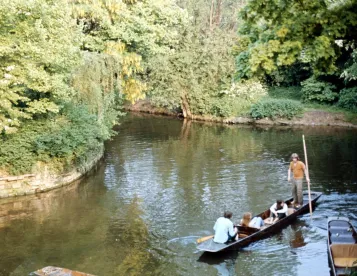On May 27, 2015, US EPA and the US Army Corp of Engineers (ACOE) released their final (and highly controversial) “Waters of the US” (or WOTUS) rule. In an effort to mollify and assure critics that the Final Rule is not an unabashed “power grab,” the Agencies continue to say that the Final Rule “will maintain all previous exclusions” and not result in any “new” permitting requirements. Interested parties, however, remain mostly unconvinced—particularly given the modest substantive changes from the Proposed Rule.
The largest controversies continue to arise from new definitions and standards set forth in the Final Rule (not the traditionally jurisdictional categories of navigable waters, interstate waters, territorial seas and impoundments of these types of waters, which remain largely unchanged). In response to the over 1.2 million comments received on the Proposed Rule, the Agencies did make some changes to proposed definitions to provide further clarity in the Final Rule. But, as detailed below, the Final Rule’s categories of “tributaries” and “adjacent waters” are still considered to expand the waters that are per se jurisdictional, despite the Agencies’ contentions. For other categories of waters that require a case-by-case analysis, the Final Rule still employs the nebulous “significant nexus” test which, in turn, still permits aggregation of similarly situated waters on a “regional” basis thereby also expanding the field of jurisdictional waters. Finally, modifications to various exemptions, like those provided for certain ditches or municipal stormwater systems, do not provide the clarity that the Agencies’ have suggested and may also provide for further expansion of the Agencies’ jurisdiction.
Tributaries
Relatively unchanged from the Proposed Rule, the Final Rule’s definition of “tributary” continues to be considered an expansive one:
a water that contributes flow, either directly or through another water . . . to a water identified in paragraphs (a)(1) through (3) of this section that is characterized by the presence of the physical indicators of a bed and banks and an ordinary high water mark.
Under this definition, tributaries include natural, man-altered, or man-made waters, and include waters such as rivers, streams, canals, and ditches not otherwise excluded (see discussion below). In a call following announcement of the Final Rule, US EPA stated that it is focused on waters with “flow,” but the Final Rule does not account for frequency and duration of flow. Further, the Final Rule includes as per se jurisdictional all “impoundments” of tributaries (and adjacent waters), which is also an expansion of the current standard.
In effort to provide more clarity, the Final Rule does add a definition for “ordinary high water mark”—defining it as a “line established by the fluctuations of water and indicated by physical characteristics such as a clear, natural line on the bank.” However, commentators still contend that the definition remains subjective citing to recent enforcement actions which define the “high water mark” as the mark resulting from flooding, not merely regular stream flow— thus still leaving discretion to the Agencies under this definition.
Adjacent Waters
“Adjacent waters”, which are also per se jurisdictional under the Final Rule, are those waters that are “bordering, contiguous or neighboring” a jurisdictional water (including any tributary). The Final Rule modifies the definition of “adjacent waters” by revising the term “neighboring” from the Proposed Rule to include specific distances or geographic features. “Neighboring” waters include:
- All waters located within 100 feet of the ordinary high water mark of jurisdictional water;
- All waters located within the 100-year floodplain of a jurisdictional water and not more than 1,500 feet from the ordinary high water mark of such water; and
- All waters located within 1,500 feet of the high tide line of a jurisdictional water.
Notably, the definition relies on the subjective “ordinary high water mark” standard detailed above. Further, critics contend that the standard, which was already viewed as expansive, will be broadened even more so by the distance limits that will capture new features. On the other hand, the geographic and numerical limits were an attempt by the Agencies to provide more clarity with respect to which waters will be covered under this category.
Other Waters
The Final Rule eliminates the “other waters” category that was included in the Proposed Rule. In its place, however, the Agencies substituted two new categories of waters, which will be considered jurisdictional on a case-by-case basis if they have a “significant nexus” to a navigable water, interstate water or territorial sea. The first category is specific waters identified in the Final Rule including “Prairie potholes,” “Carolina bays and Delmarva bays,” “Pocosins”, “Western vernal pools,” and “Texas coastal prairie wetlands.” These waters are considered “similarly situated” and as such can be “combined” for purposes of the “significant nexus” analysis. The second category is a broader, catch-all category that includes “all waters located within the 100-year floodplain” of traditionally jurisdictional waters (navigable or interstate water or territorial sea) and “all waters located within 4,000 feet of a high tide line or ordinary high water mark” of a jurisdictional water, including all tributaries and impoundments. The broadness of these categories will undoubtedly result in a regulatory burden on waters that fit within these definitions, many of which are not considered jurisdictional under the current rule (and Supreme Court precedent). At a minimum, they will require a case-by-case analysis utilizing the Final Rule’s “significant nexus” test.
“Significant Nexus” Test
In that vein, the controversial “significant nexus” test remains under the Final Rule and continues to be defined to mean that a “water, including wetlands, either alone or in combination with other similarly situated waters in the region, significantly affects the chemical, physical, or biological integrity of a water.”
The Agencies did, in an effort to clarify the scope of the test, include additional definitions and illustrations. For example, the Final Rule now includes a definition of “in the region” which means the “watershed that drains to” the nearest navigable or interstate water or territorial sea. “Similarly situated” waters are also defined to include those that “function alike and are sufficiently close to function together”. The Final Rule does not, however, define what “function alike” and “sufficiently close” mean, leaving considerable discretion to the Agency to interpret these terms . Moreover, the Final Rule still permits aggregation of similar waters in a “region” for purposes of the case-by-case analysis, which critics contend will vastly expand those waters covered by the Final Rule.
The Final Rule also expressly adds certain enumerated functions of a water that “individually” or “cumulatively” will be evaluated to determine if a “significant nexus” exists to a jurisdictional water, including sediment trapping, nutrient recycling, pollutant trapping, retention and attenuation of flood waters, runoff storage, contribution of flow, export of food resources and provision of dependent aquatic habitat for species located in a jurisdictional water. These functions help detail the specifics of the standard, but also illustrate the broadness and subjectivity of the Agencies’ proposed scope—as a single one of these functions could be utilized to support a jurisdictional determination by the Agencies.
Exemptions
The Agencies have said that all existing exemptions are maintained under the Final Rule. However, with respect the exception for “prior converted cropland”, the Final Rule adds a new statement that for purposes of the Clean Water Act, the authority for making such a determination resides with US EPA notwithstanding any other federal agency’s determination on its status, thereby seeming to grant itself the ability to override prior determinations from other agencies. Similarly, US EPA has said that the Final Rule maintains the exemption for waters within Municipal Separate Storm Sewer Systems. However, the wastewater treatment exemption was significantly revised to include separate stormwater and wastewater recycling structure exemptions, but only to the extent such structures are created in dry land. “Dry land” however is undefined. Moreover, certain types of these structures while initially created on dry land are designed overtime to take on wetland-type characteristics and it is not clear how these structures will then be regulated. Thus, these exemptions may not be as expansive as the prior rule.
Additionally, the Final Rule also does not clearly deliver on promises by the Agencies to address the exemption of certain other structures from jurisdictional requirements such as irrigation ditches. The Agencies have stated that the focus of the rule is on “streams, not ditches” with the rule limiting protection to ditches that are constructed out of streams or function like streams and can carry pollution downstream. However, ditches that provide flow of any nature (ephemeral, intermittent, or perennial) “directly or indirectly”—which are undefined terms—to a jurisdictional water are considered jurisdictional under the Final Rule. Agricultural interests contend that the Final Rule could therefore still be utilized to assert jurisdiction over irrigation or agricultural ditches or ditches that flow only when it rains.
Next Steps
The rule will be effective 60 days after publication in the Federal Register. Numerous judicial appeals of the Final Rule are expected and will likely raise a host of constitutional and statutory/regulatory challenges. Legislation has also been introduced which would prohibit US EPA/AOCE from implementing the Final Rule or eliminating any funding for them to do so. While these measures would likely face a veto, they continue to advance. We will continue to provide commentary as developments with the rule occur.




 />i
/>i
